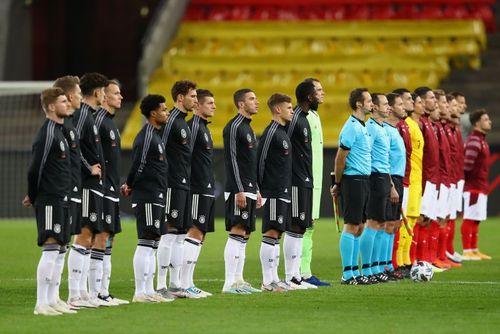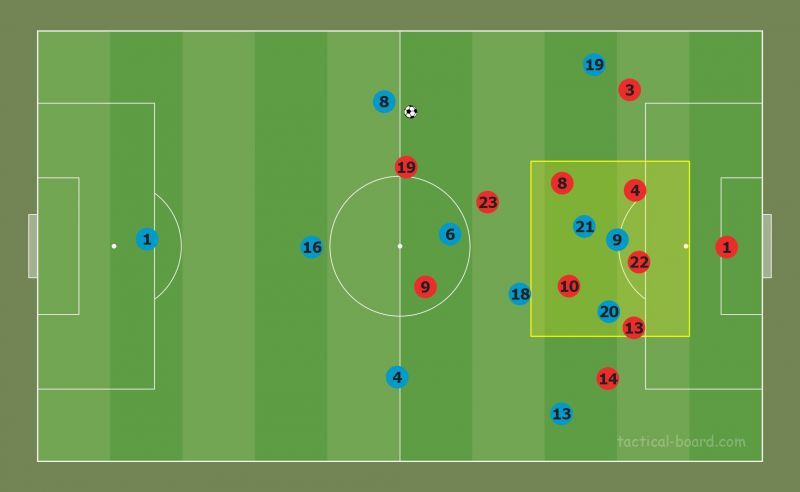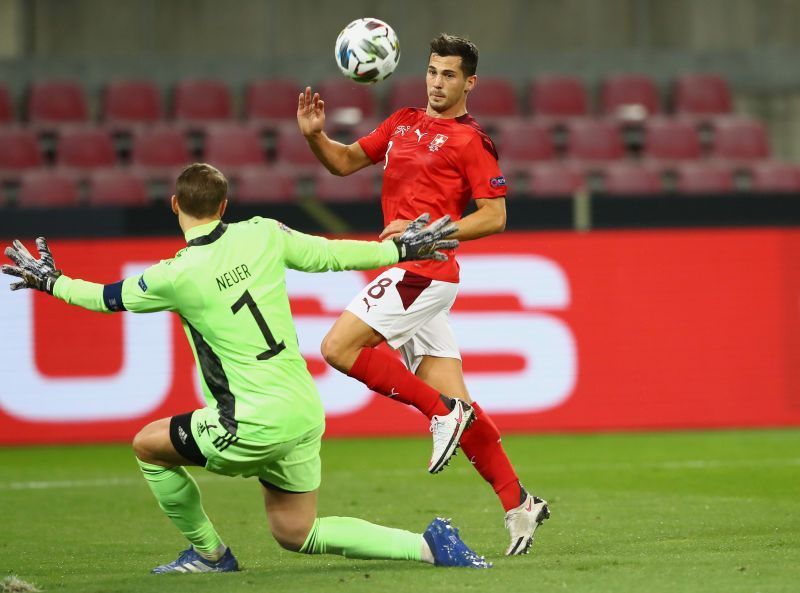
Germany 3-3 Switzerland: 5 talking points as Die Mannschaft come from behind to salvage hard-fought draw | UEFA Nations League 2020-21

In what was an entertaining game of football, Germany and Switzerland played out a six-goal thriller at the RheinEnergieStadion on Tuesday. It was arguably the best fixture from the UEFA Nations League in October as the Germans came back twice from losing positions to bag a point, denying Switzerland their first win on German soil in over 10 years.
Outrageous defending, tailor-made finishes, change in tactics and goals galore summed up a rather exciting game, something we haven't witnessed during international breaks.
After a rocky start for Germany, the Swiss fully capitalised on the home side's defensive lapses, scoring two in under 30 minutes. The game developed into a close-cut face-off between the two sides desperate for the three points.
Vladimir Petković's men had a two-goal advantage within 26 minutes, courtesy of abysmal defending from Germany and clinical finishing from the Swiss internationals in the first half.
Mario Gavranović and Remo Freuler scored from a header and a chip respectively to give an important advantage for the away side, only for Timo Werner to grab one for his side with a genius solo effort just before half time.
The goal shifted the balance of the game as the Germans started imposing themselves more on Switzerland's deep block and tried to disrupt the rigid midfield and defensive lines of the Swiss.
However, the equaliser for Germany came in the second half as Kai Havertz pressed Fabian Schär, intercepted a pass from him, ran at Switzerland's defence and dispatched the ball into the bottom corner in what was a classy goal by the Chelsea midfielder.
Germany was lacking in various aspects in the game and eventually highlighted their shortcomings yet again when they conceded a shabby goal just seconds after Havertz's beautiful solo effort. However, the game was not done just yet as Serge Gnabry got his team back into the game after hunting down Timo Werner's low cross and flicking it into the far corner with immense ease.
On that note, let us take a look at five talking points from the thrilling game.
#5 Tremendous positional fluidity amongst Timo Werner, Serge Gnabry and Kai Havertz

Although Joachim Löw deployed a 4-2-3-1 with Timo Werner as the lone centre-forward, he was far from being alone in the game. The wingers pushed inside to crowd the area ahead of Switzerland's three-man defence, almost playing as inside forwards, to get in behind their midfield. Meanwhile, Robin Gosens and Lukas Klostermann, Germany's two full-backs, provided width on either flank.

Joshua Kimmich was predominantly the number 6 for the Germans as Leon Goretzka operated a few yards ahead of him in a creative role. What was interesting to see is how well the likes of Serge Gnabry and Kai Havertz interchanged their positions depending on the ball, while Werner was always on his toes to get in behind the line or draw Switzerland's centre-backs out of the firing line for his compatriots.
#4 Switzerland's solid plan against Germany: Exploit the spaces behind

When Switzerland hosted Germany just a month ago, Petković had a different plan to counter Löw's men. In what was a 1-1 draw back in September, Switzerland took the game to the Germans and despite coming out as the more dominant side, they only snatched a point from the game.
Last night, the ideas were different but the result was the same. This time, the away side were happy to soak up pressure and hit Germany's high defensive line on the counter; a tactic which seemed to work perfectly.
Whether this was the game plan or whether they planned to sit back after a surprising early goal is unknown but either way, it was Germany who had a massive 63% of the possession throughout the game, while registering as much as 70% in the first half.
Despite Germany seeing more of the ball, Switzerland were peppering the home side on counter-attacks as Xherdan Shaqiri acted as the number 10 to get into pockets behind Germany's midfield and play the likes of Steven Zuber and Gavranovic in acres of space left behind by Gosens and Klostermann. This tactic worked incredibly well but it was Switzerland's defence who let down the Red army, quite opposite to what we saw in the reverse fixture.
Germany had 18 shots attempted compared to Switzerland's 13 but if there is a team who should be upset about today's result, it should be Switzerland because of the number of chances they squandered in front of the goal. They had the better chances but an inefficient display means they have to share the spoils with a team who were not as good as them on the night.